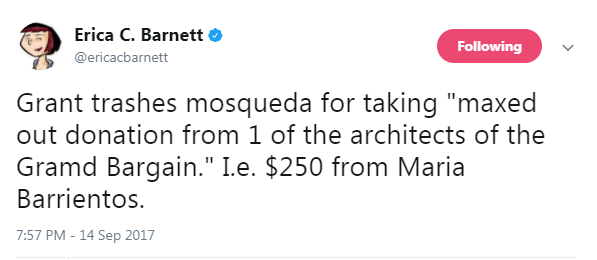"Single Family" Housing
Back in 2015, I was invited to meet with a group of residents of University Plaza in the U-District. This is the tall condo tower a block west of Trader Joe's. They have a pool.
The ultimate in attached single-family housing.
During this discussion, the issue of the Business Improvement Area (BIA) came up. A brief rundown: A BIA is an area wherein different commercial properties pay a fee to support increased cleaning and activation in their business area, the total amount paid dependent on the proximity to the main area that is benefiting. Under Washington law, "commercial" includes apartment buildings and condominium buildings. The U-District BIA as constructed meant that this tower would have to pay into the pool of money.
Without re-litigating the specific issue, one of the comments that came up was someone calling out their perspective of the unfairness that detached single-family housing was not a taxed/charged property for a BIA. Her point: the housing at this condo tower is single-family, it just happens to be attached and stacked. With the park-like amenities around the property, and the trees and the like, it was, in her perspective, better for the environment (both built and natural) to have stacked and attached single-family housing with shared yards and tree-lined sidewalks than detached single-family housing, and thus they should not be penalized by being subjected to a commercial property tax scheme.
When talking about HALA, a lot of folks point to the proposals on SF zoning in Seattle as their big opposition. This typically starts with a misrepresentation (accidental or not) that HALA called for an eradication of SF zoning, period. The sad reality is that this just is not the case. And when the city threw out what HALA proposed, it threw out an interesting - and necessary - opportunity to create more homeownership opportunities in Seattle.
See, the idea was to work with neighborhoods to start a pilot program allowing attached single-family homes in areas where that is currently not allowed (roughly 65% of the city, or 55% of the city, depending on how you count). Contrary to what folks were hollering about, this wasn't allowing massive multifamily structures, rather, the proposal would allow for more than one family to live within the envelope of what is currently allowed.
Put another way: where the current zoning would allow for a 4,000 square foot house for one family, this proposal would allow for a 4,000 square foot (total) structure, split in a way that three families could live there. Smaller individual homes, but plenty of space, frankly, for most people. Through cooperative purchasing and land-trusts, this would literally create more homeownership opportunities. It would also create more family-size rental unit opportunities. These are both things we need in Seattle.
The idea that "single family" housing must be detached units is, frankly, false. It inherently casts a dispersion on the notion that families might choose other housing types. My family lives in medium-sized multi-family housing, and it is exactly what we prefer. We don't need someone else to determine that their value-set is somehow superior to ours.
But what does this mean in the larger context of zoning in Seattle? There are those, of course, who believe we should just abolish all zoning. I could not disagree more. There is a historical context of racism and segregation incorporated in zoning. And ignoring that is perpetuation of that racism. As a city, we must look to ways to preserve the thriving communities that were borne of racist city policies. Through community engagement and equitable investment in parks, schools, recreation, and transportation, etc.
But zoning today serves additional purposes. One thing that you'll notice about those who are most into the idea of "abolish zoning" is a general opposition to impact fees and other forms of extractions from development for community benefit. While there is a small line between extractions for community development and extractions for the purpose of slowing or stopping development, there are other considerations that support zoning restrictions and the idea of "Lower Density Housing" as a replacement for the existing SF zoning. The reason a pilot project was genius: the politics of the suggestion requires an example of how it works.
The fact remains that the majority of housing should be built around and near existing transit hubs. With the tax structure we currently enjoy, creating new hubs with the idea of "if we build it, transit will come" is folly. We know where transit is going, and we know our limitations on revenue to bump up transit options. So the bulk should go to where it is.
So a low-density option only makes sense. The Bryant neighborhood, for instance, has capacity for more families, but not unlimited capacity. Streets are only so wide, and there is only so much funding in existing budgets (and future budgets) to support traffic control investments to prioritize safety and pedestrian and bicycle infrastructure.
I've talked with folks who say they moved to Seattle 30 years ago because they wanted to be near the city, but with a more suburban lifestyle. This is a mentality that is not going to change overnight. And while my initial reaction ("well, maybe it's time for you to move to a suburban city rather than blocking homeownership opportunities in Seattle, where I was born") exists, that's not the most constructive thing in the world.
As we listen to politicians try to earn our votes, it's important to hear what they say, and be willing to ask them what they mean by it. Nobody (so far) who is running for mayor has come out and said what to do about the existing SF zoning. But what does that mean to them? Is a single family living in an attached home somehow less important than one living in a detached home? Is the demonization of multi-family housing something we want to perpetuate, or do we take a stand that we can, in fact, allow more people to enjoy our unique neighborhoods and discourage suburban sprawl?
This will be important as our city grows. Whether it's housing for workers in tech (who are people, too, and just as important to our communities), or home health care workers. For folks who want to age-in-place in their neighborhood, but maybe don't want as much space to take care of in the process. To provide new wealth-building opportunities for communities of color who have seen a draining of family wealth since the passage of I-200. Without more housing options, Seattle will become a city for the very rich and the very poor. And as we are talking more about this specific component, it is going to be important that politicians inform us not only where they stand on the zoning itself, but what single family housing means to them.




